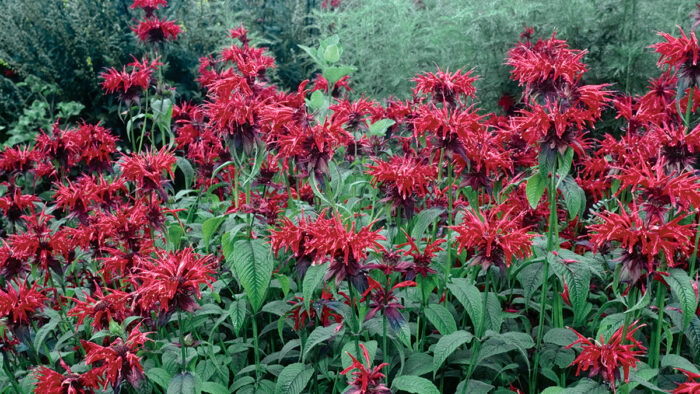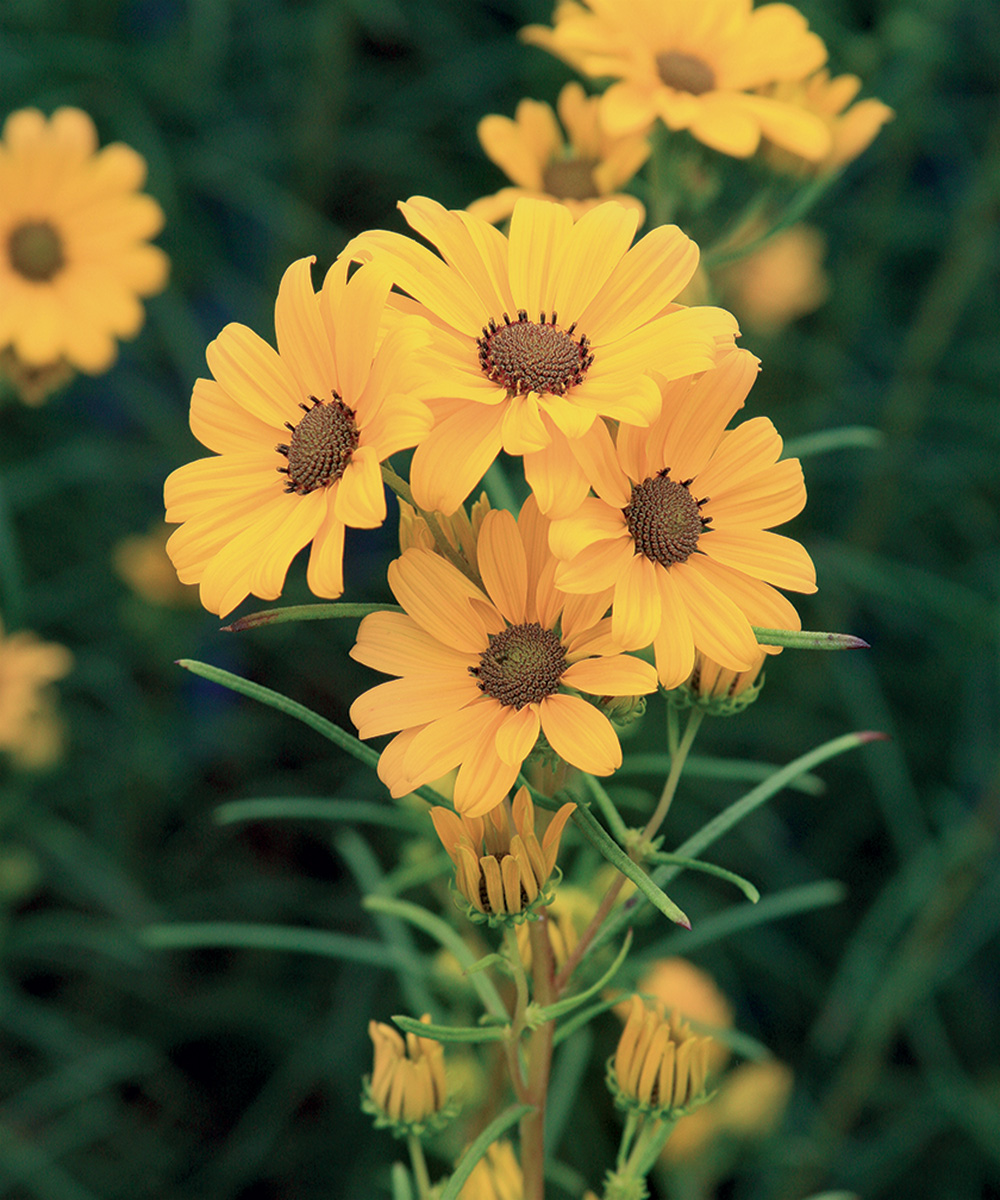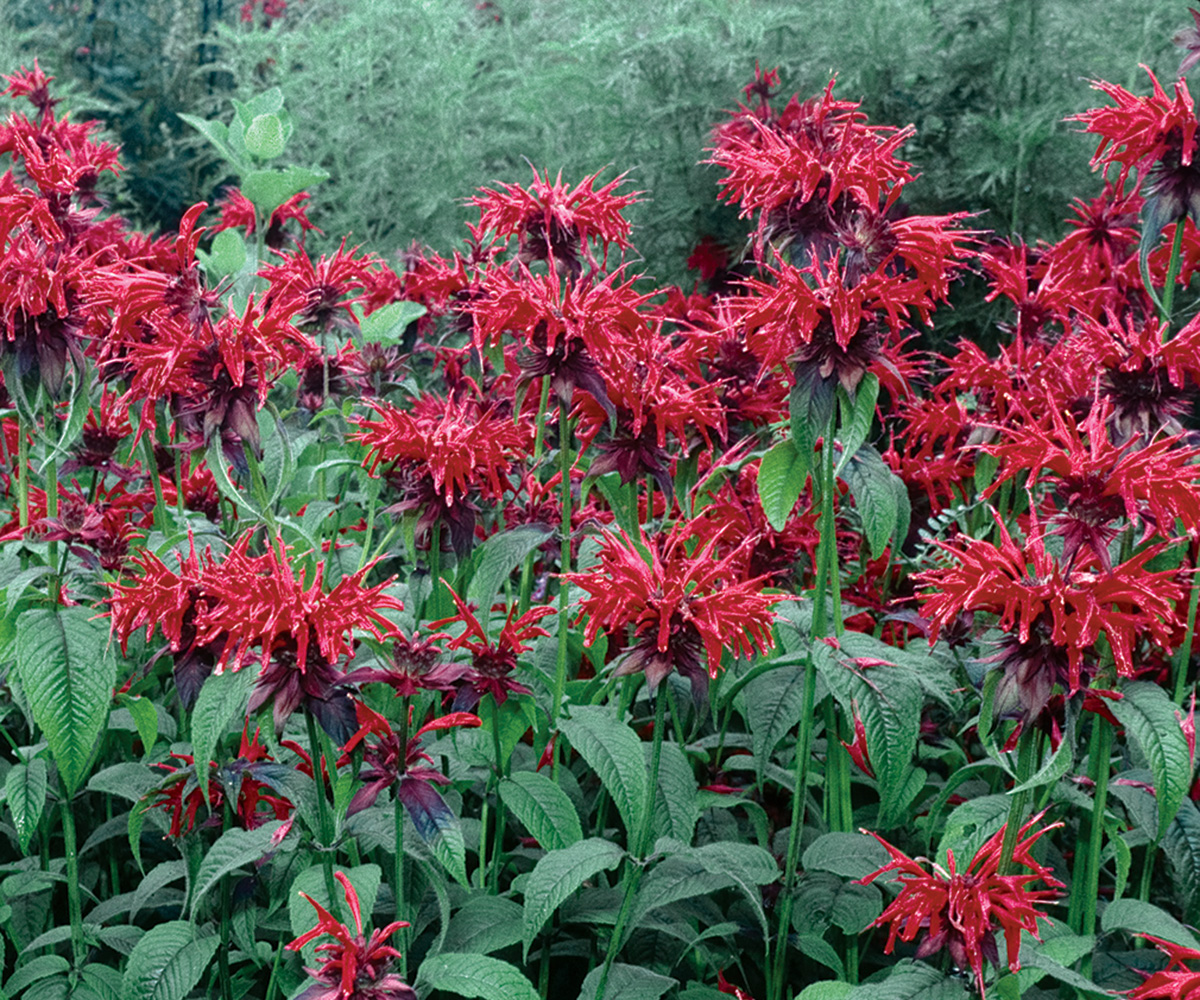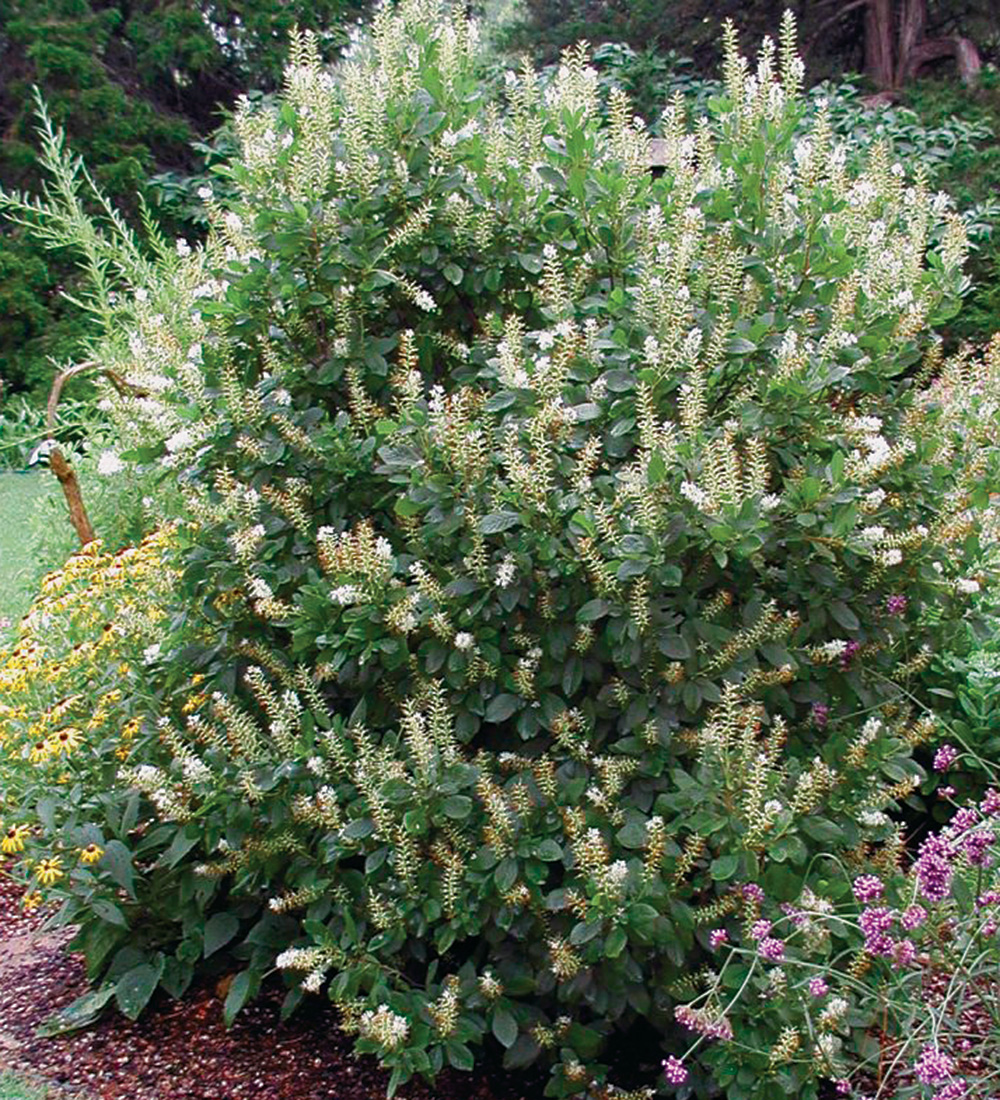
Lots of gardeners deal with at least one area of their property that never seems to dry out. As horticulturist Joseph Henderson explains in his article Plants for Soggy Spots, lots of plants flounder in these kinds of conditions: “Without a steady supply of air, waterlogged roots begin to gasp and eventually rot, killing the foliage above.”
Thankfully, a soggy spot doesn’t require a complete garden overhaul; it just requires the right plants that thrive in consistently wet conditions. Below, you’ll find plants for wet areas in the Southern Plains. To find even more plants for wet soil, check out Joseph’s article: Plants for Soggy Spots.
1. Scarlet Hibiscus

Name: Hibiscus coccineus
USDA Hardiness Zones: 6 to 11
Size: 6 to 10 feet tall and 4 feet wide
Conditions: Full sun to partial shade; medium to wet soil
Scarlet hibiscus thrives in our bog garden at the Oklahoma Gardening studio gardens. Star-shaped scarlet flowers with a prominent stamen reach up to 6 inches in diameter, which make them one of the showiest mid- to late-summer flowers. It seems to perform best with a little shade and added support in windy areas.
2. Swamp Sunflower

Name: Helianthus angustifolius
Zones: 6 to 9
Size: 5 to 7 feet tall and 4 feet wide
Conditions: Full sun; prefers medium to wet soil but will tolerate drought
I can’t wait for this plant to bloom in my garden. Swamp sunflower starts out slowly but eventually shoots up and puts on a spectacular display of bright golden flowers in late September through October—a perfect show to wrap up the season. Because of its height, it benefits from staking in our windy Oklahoma garden. Prune it back in June to keep it bushy and to encourage more flowers.
3. Bee Balm

Name: Monarda didyma and cvs.
Zones: 4 to 9
Size: 2 to 3 feet tall and wide
Conditions: Full sun to partial shade; moist to wet soil
Bee balm is noted for its vigorous growth, even in low, wet areas where not much else will grow. It puts on a show in soggy soils with profuse, 3-inch-long, tubular flowers in tufts that remind me of a punk rocker’s hairdo. Hummingbirds are especially attracted to its bright blooms. Powdery mildew is a common disease, but resistant varieties are available. One of my favorite cultivars is ‘Jacob Cline’ (pictured).
4. Sweet Pepperbush

Name: Clethra alnifolia and cvs.
Zones: 3 to 9
Size: 6 to 10 feet tall and wide
Conditions: Full sun to partial shade but will tolerate full shade; average to wet soil
Sweet pepperbush is one of my favorite native shrubs. I like that it thrives in a variety of soil conditions and can add structure to a soggy area. It has clean, glossy, dark green foliage, which turns yellow in fall. Intense, sweet-smelling clusters of white to pinkish flowers that look like 6-inch-tall candlesticks cover the shrub mid-July to late August. The blooms attract bees and butterflies.
David Hillock is an extension consumer horticulturist at Oklahoma State University in Stillwater.

















Comments
Log in or create an account to post a comment.
Sign up Log in